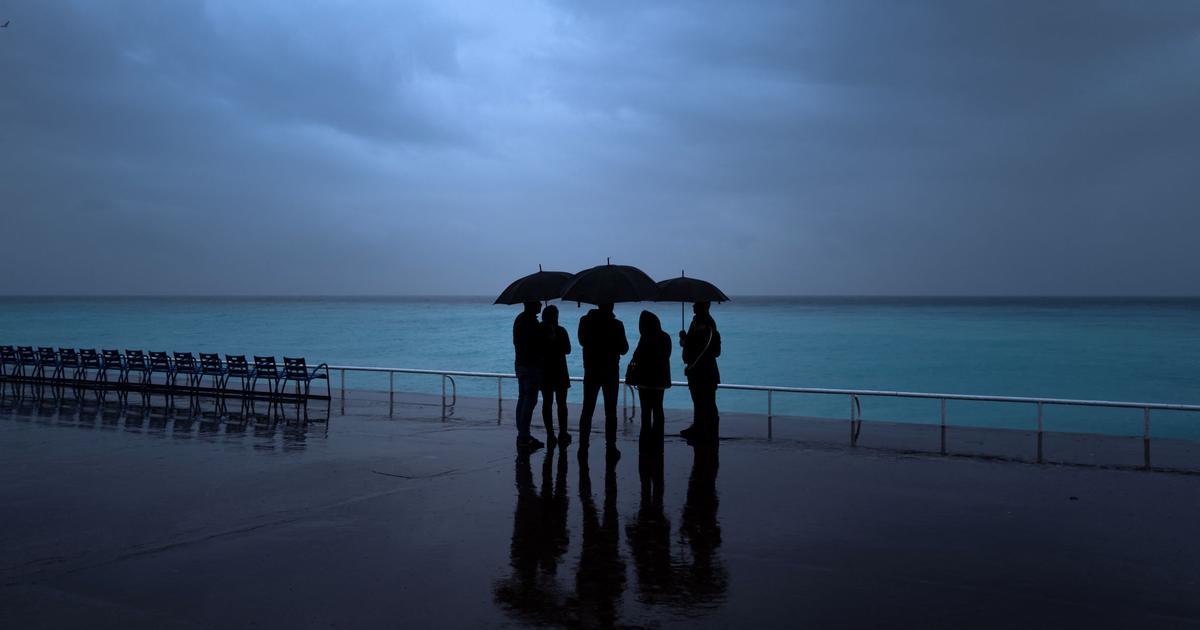The writer Brenda Navarro in Mexico City.CLAUDIA ARÉCHIGA
These last weeks, dear reader, I was surprised again by a thought that from time to time assails me and then stays inside me or, rather, next to me, for days: the idea of the literary double.
But not that of the double as a character, that is to say, a
doppelgänger
who is at the same time the hero and antihero of a story —a genre that our tradition imported from romanticism, which in turn extracted it from mythology—, nor the even more improbable one of the double as the character's environment, that is, as a universe —a genre that our tradition exported to the world with
Morel's invention—
.
No, the idea that adheres to me until I accept it as transitory obsessions are accepted —bending one's hands—, is more ambiguous, although it has to do with a certain romanticism and Bioy Casares, Bioy y Borges, Bustos Domecq.
And it is that the possibility of the double creator cycles me, the double as a result of what is written, not just by four hands but in total ignorance of that
other
: think —this is how my obsession crystallized— in
The
Empty Book
by Josefina Vicens and
The empty speech
by Mario Levrero.
Or in —so my obsession returned this time— Brenda Navarro and Gabriel Mamani Magne.
The writer or the writer as double
That literature is something that is also written together and not only in solitude is more or less evident: writers and writers share the same hunting ground and sometimes also the same season, although each one chooses his prey —it doesn't matter if this is real or imaginary— and even if everyone chooses their particular weapons.
For what I have just stated to work, dear reader, you must assume that the prey is the story, that is, the background, while the weapons are the tools that erect and sustain the form: language, architecture, rhythm, for instance.
And you must also accept —sorry for being a pedinche—, that I am not referring to the male or female writers who hunt in groups and who therefore form those packs on the prowl that we know as
literary currents
, but to those and those who, going hunting alone, are unaware that they have a double who has left at a similar time, in search of the same prey or carrying the same weapons — that they find the same story and with the same tools is, perhaps , the only impossible one—: read, under the umbrella of this idea, for example,
Mudanza
by Verónica Gerber and
The optic nerve
by María Gainza or
Ways to return home
by Alejandro Zambra and
The spirit of my parents keeps rising in the rain
by Patrick Pron.
Or, better yet, going back to the Mexican writer Brenda Navarro and the Bolivian writer Gabriel Mamani Magne, that is, two of the last appearances that seem really important to me and that, as I said, are responsible for the last chapter of my most peculiar obsession. —Navarro and Mamani Magne would seem to have gone out to hunt the same prey but carrying, of course, each one their own weapons, not once but twice— but also, I had not said this yet, of four of my last reading congratulations, read, under the shadow that I offer you here, his
Empty Houses, Ceniza en la boca
,
El hostage
and
Seoul, São Paulo
.
twice double
What is Navarro's dam in
Empty Houses
?
The kidnapping of a child while he was playing in a park.
What is Mamani Magne's prey in
The Hostage
?
The kidnapping of two children while they sleep in their house.
What preys of the Mexican in
Ceniza en la boca
?
Hispanic-American migration to Spain, the suicide of the narrator's brother and the marks left by racism and economic and social violence.
What are the dams of the Bolivian in
Seoul, São Paulo
?
The Hispanic-American migration to Brazil, the death in life of the narrator's cousin and the marks left by miscegenation and economic and social violence.
Then, obviously, there are the tools, that is, what in this case differentiates the prison doubles and makes them, as paradoxical as it sounds, unique writers: in
Empty Houses
, Navarro uses two adult voices, that of the mother who has lost her son and that of the mother who has made a son, to question motherhood, while Mamani Magne uses the voice of a child, the oldest of the kidnapped children, to question paternity.
Something similar happens in
Ceniza en la boca
and
Seúl, São Paulo
: although the stories are told by a girl and a boy, their weapons could not be more distant: Navarro constructs a tragedy with hints of black humor, using cautious language and a rhythm rhythmic, while Mamani Magne builds a black comedy with tragic overtones, using spontaneous language and a frenetic pace.
obsidian mirror
The history of the literary double is tied to that of the reflection, to the possibility of it coming to life in the mirror and going out into the world.
Let us not think, for a moment, about the mirrors that we know today.
Let us think of one of obsidian, one of those that existed in our region before the wars of conquest and that had two faces: in one the reflection of the world was observed, in the other the reflection looked at the world.
Beyond myths and legends, the issue is concave and convex: on one side the world expanded, on the other it shrank: this is what happens with the double but unique universes of Navarro and Mamani Magne: in hers, the reader contemplates the world with a wide angle, in his, with a telephoto lens.
Navarro and Mamani Magne each occupy one side of the same mirror, they are double but also unique, as, it seems to me, happens with all double creators: their reflection is not the other, it is the reflection of one and the other.
For this reason, I tell myself noticing that the obsession lets me go, you can write alone and together.
Like Navarro and Mamani Magne, like Gerber and Gainza, like Vicens and Levrero.
coordinates
Empty houses
and
Ash in the mouth
are in the Sixth Floor edition.
El hostage
was published by Dum Dum, while
Seúl, São Paulo
, by Editorial 3600 (soon it will also appear in an edition of Periférico).
Mudanza
can be obtained in editions of Almadía, Montacerdos and Pepitas de Calabaza, while
The Optic Nerve
in Laurel and Anagram, which also published
Formas de return home
.
Random House published
The Spirit of My Parents Keeps Rising in the Rain
, as well as, currently, most of Levrero's work.
The work of Josefina Vicens is in the FCE.
Subscribe here to Emiliano Monge's newsletter on American literature.

/cloudfront-eu-central-1.images.arcpublishing.com/prisa/YDEH7SJ5SVAIZNV3LXQBYMEBCU.jpg)













